2015 July Monthly Report
Highlights
Wildfires dominated the news at the start of July with the State allowing campfires at select state parks in the Matanuska-Susitna Borough area on the 2nd. Fireworks bans from June were still in effect. No new fires that were the result of fireworks were reported during the weekend of the 4th. The Fairbanks North Star Borough would not end up lifting its ban on fireworks until the 28th. Dense smoke advisories were issued for areas west of Fairbanks on the 4th. The air quality in Fairbanks area dropped to unhealthy conditions again on the 5th, while warmer temperatures were predicted for the Interior helping fuel the nearly 300 fires burning at the time; 36 of them staffed. Voluntary evocation orders were still in effect at Tanana, with several fires surrounding the village generating hazardous conditions. Progress was reported on containing fires across the state including the Rex Complex fires near Nenana, Healy Lake near Delta Junction at 63% contained, West Fork Fire (100%) and Anaconda (68%) both near Chena Hot Springs. Nearly 500 fighters were working the Aggie Fire near the Elliott Highway north of Fairbanks that had grown to 13,000 acres and was expected to increase in size with the warmer weather.
The hot, dry, weather on the 6th did, as predicted, push the wildfires to new extremes. Air quality again dropped to hazardous levels for many Interior areas. The silver lining in the cloud of dense smoke that permeated the Interior was that it helped reduce temperatures over the next few days. By the 7th, the Aggie Creek fire had jumped to 17,000 acres and more personnel (600), as well as air tankers, were assigned. Some evacuations were recommended in the area. One of the Rex complex fires cropped a power line near mile 290 of Parks Highway, killing power to the Anderson School and the incident command post. The Baker fire moved to one and half miles of the Elliot Highway. Similar problems with aggressive behavior were reported at a number of the staffed fires in the Interior. Air quality continued to be hazardous in the Fairbanks area and a number of activities were canceled. The Borough Parks & Recreation canceled all outdoor activities, and youth soccer and softballs games were scrapped, and the Holland-America Tour Company canceled its Interior flight seeing tours due to the smoke. Total acreage burned exceeded three million acers at this point.
The Aggie Creek fire had topped 26,000 acres on the 10th, and the fire had moved to within a half a mile of the Trans-Alaska Pipeline. A number of efforts were used to protect the pipeline. The fire was reported at 25% contained at that point, and the number of personnel assigned to the fire had dropped to about 400. The Nome Creek Valley reopened to camping again on the 11th as wildfire danger dropped due to the rain, then closed again on the 13th due to the U.S. Creek Fire. The fires around Tanana were still listed as quite active, and had topped 500,000 acres in total and more than 250 fighters were assigned to the fires. Eighty-six personnel were assigned to the Long Lake fire (25,000 acres) near Northway. The 75,000 acres Hay Slough fire near Manley threatened mining and structures, while the nearby Baker fire grew to over 20,000 acres. Total area burned had reached 4.69 million acres on the 13th, with 300 active wildfires; the fifth worst season on record. Wildfire growth slowed across the region on the 16th due to the wetter weather. Totaling the efforts, more than 2,000 firefighters from Alaska had been joined by 3,500 from the Lower 48.
High wind warnings for gusts up to 65 mph were issued for areas of Anchorage on the 16th. The 19th saw heavy rain (between one and one and a half inches) forecasted for the Chena, Chatanika and Salcha Rivers, as well as Arctic Village and areas east. High water warnings were issued on the 19th for the central and eastern Brooks Range from the heavy rainfall. Wildfire generated smoke worsened the air quality in the Fairbanks area again on the weekend of the 25th. Heavy rain, a ’50-year rainfall event’ that same weekend in Anchorage resulted in localized flash flooding, the closure of some streets with up to two feet of water on them, and the evacuation of about 30 people from an apartment complex. A weather station at Lake Otis and O’Malley reposted 2.56" of rainfall during the event, with the Anchorage International Airport reporting 1.05".
The warmer, drier weather regime that had started around the 19th resulted in some increased fire activity by the 26th. Smoke returned to the Fairbanks area. The total area burned for the summer had reached 4.8 million acres, the fourth-highest summer on record and larger than the state of Connecticut. And seven new fires were started by lighting on the 24th, but none were deemed serious and only one needed to be fought. The total burned by the end of the month was 4.9 million acres. The slowing fires allowed the number of personnel staffing the various fires to drop to about 1,600 that weekend, half the number at the peak a few weeks ago. Lower 48 crews were sent back south as heavy rains were again forecasted for portions of the Interior on the 27th. Salcha recorded more than two inches of precipitation A small stream flood advisory was issued for the Eastern Alaska Range. The Taiya River near Skagway had risen to near its banks by the 27th from persistent rain in the area. The damp conditions resulted in dense fog advisories for the areas of the Alaska Range and Interior on the 28th and 29th. The morning of the 30th saw heavy rains in the Anchorage area again.


